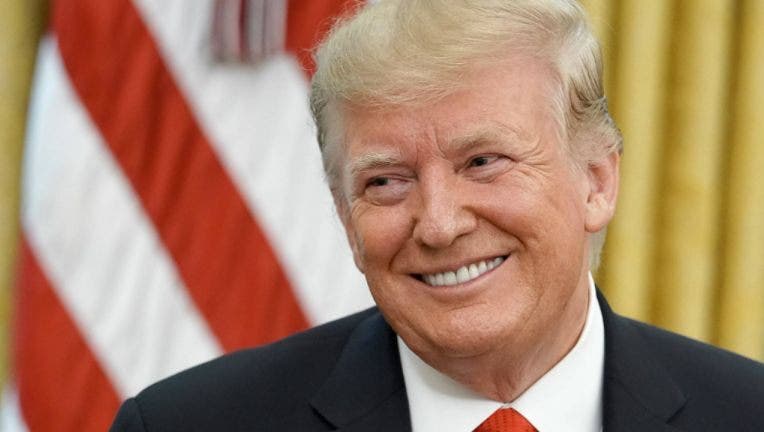U.S. unemployment rate hits 50-year low of 3.5% - lowest since 1969

WASHINGTON - The U.S. economy added a modest 136,000 jobs in September, a gain that managed to lower the unemployment rate to a new five-decade low of 3.5% but also suggested rising caution among employers.
The additional hiring and the drop in the jobless rate will likely ease worries that an economy weakened by the U.S.-China trade war and slower global growth could be edging toward a potential recession. The government on Friday also revised up its estimate of job growth in July and August by a combined 45,000.
Still, a drop-off in the pace of hiring compared with last year points to rising uncertainty among employers about the job market and the economy in the face of President Donald Trump's numerous trade conflicts. Pay growth has also weakened, reflecting the hesitance of employers to step up wages.
"The September jobs report sent some conflicting signals, but the big picture remains one of a labor market - and an economy - whose growth is downshifting but not collapsing," said Michael Feroli, an economist at JPMorgan Chase.
The comparatively sluggish hiring data makes it likely that the Federal Reserve later this month will cut rates for the third time this year to try to help sustain the expansion. At the same time, the drop in the unemployment rate from 3.7% may embolden some Fed officials who have resisted rate cuts.
Investors appeared pleased that the jobs report at least suggested that the economy remains resilient for now. The Dow Jones Industrial Average was up more than 200 points in mid-day trading.
Excluding government hiring, job gains over the past three months have slowed to an average of 119,000 a month, the weakest showing in seven years.
And despite ultra-low unemployment, average wages dipped in September, the Labor Department said. Hourly pay rose just 2.9% from a year earlier, below the 3.4% year-over-year gain at the start of the year.
Julia Pollak, a labor economist at jobs marketplace ZipRecruiter, said the pay that employers are advertising has declined this year after rising sharply in 2018. And she noted that the number of part-time workers who would prefer full-time work has risen over the past two months.
Those trends "show that employers are increasingly risk-averse as global uncertainty and recession fears rise," Pollak said.
Tom Lix, the CEO and founder of Cleveland Whiskey, which distills bourbon and rye whiskies, said the trade war has shut down markets that his company was developing in Europe and China. This has forced him to postpone hiring and a planned expansion.
"We were going to build a new building, and add a restaurant and bar, which would have expanded our employment significantly," Lix said.
He had also expected to add three distillers to his staff of 15. But that was before Europe and China imposed retaliatory tariffs on U.S. bourbon - after Trump had raised import taxes on their goods. Europe had accounted for about 15% of Lix's sales before the tariffs took effect.
"All of our European connections and all of our Chinese connections - we're not doing business with them right now," he said.
On Sept. 1, Trump hit $112 billion of Chinese goods with 15% tariffs. He has threatened on Dec. 15 to tax the rest of China's exports to the United States, which would raise prices for U.S. consumers.
The weakest sector of the U.S. economy - manufacturing, which is likely already in recession - cut 2,000 jobs in September. At the same time, retailers shed 11,400 jobs, and employment in mining and logging was unchanged.
The big gains last month were in health care, which added 41,400 jobs, and professional and business services, which include such higher-paying areas as engineering and accounting but also lower-paying temp work. That sector added 34,000 positions.
Friday's jobs data underscored the benefits of a hot job market for lower-paid Americans and traditionally disadvantaged workers. The unemployment rate for workers without high school diplomas fell to 4.8%, the lowest level on records dating to 1992. The rate for Latinos fell to 3.9%, also a record low.
Amy Glaser, senior vice president at Adecco USA, a staffing firm, says companies are still willing to raise pay for blue collar workers. Some are also paying retention and signing bonuses and in some cases double pay for overtime.
"We're still seeing strong demand, we're still seeing more job opportunities out there than candidates," Glaser said.
The employment figures carry more weight than usual because worries about the health of the economy are mounting. A measure of factory activity fell in September to its lowest level in more than a decade, while a similar gauge of the economy's vast services sector slowed sharply in September, falling to its lowest point in three years.
The job market is the economy's main bulwark. As long as hiring is solid enough to keep the unemployment rate from rising, most Americans will likely remain confident enough to spend, offsetting other drags and propelling the economy forward.
But a slump in hiring or a rise in the unemployment rate in coming months could discourage consumers from spending as freely as they otherwise might during the holiday shopping season.
Consumers are still mostly optimistic, and their spending has kept the economy afloat this year. But they may be growing more cautious. Consumer confidence dropped sharply in September, according to the Conference Board, a business research group. And their spending in August slowed.
There are some bright spots. Home sales, for example, have rebounded as mortgage rates have fallen, helped in part by the Fed's two interest rate cuts this year. And Americans are also buying cars at a still-healthy pace. Consumers would typically be reluctant to make such major purchases if they were fearful of a downturn.

